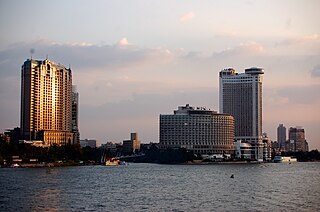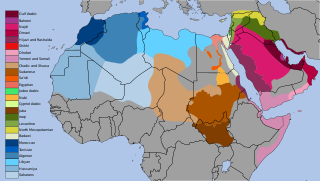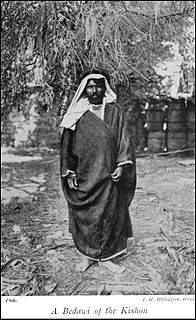| Sa‘īdi Arabic | |
|---|---|
| Native to | Egypt |
Native speakers | 22.4 million (2016) [1] |
Afro-Asiatic
| |
| Arabic alphabet | |
| Language codes | |
| ISO 639-3 | aec |
| Glottolog | said1239 [2] |
| Linguasphere | 12-AAC-eb [3] |
Ṣa‘īdi Arabic (Sa'idi Arabic: صعيدي, locally [sˤɑˈʕiːdi] , Egyptian Arabic: [sˤeˈʕiːdi] ), also known as Upper Egyptian Arabic, [4] is a variety of Arabic spoken by the Ṣa‘īdi people south of Cairo, Egypt, to the border of Sudan. [5] It shares linguistic features with both Egyptian Arabic and the Quran's Classical Arabic. Dialects include Middle and Upper Egyptian Arabic.

Arabical-ʻarabiyyah[alʕaraˈbijːa](
A Ṣa‘īdi is a Southern person from Upper Egypt. Approximately 40% of Egyptians live in Upper Egypt, and "80% of Egypt's poverty is concentrated in Upper Egypt". Millions of upper Egyptians have migrated to Lower Egypt for work opportunities.

Cairo is the capital of Egypt. The city's metropolitan area is one of the largest in Africa, the largest in the Middle East, and the 15th-largest in the world, and is associated with ancient Egypt, as the famous Giza pyramid complex and the ancient city of Memphis are located in its geographical area. Located near the Nile Delta, modern Cairo was founded in 969 CE by the Fatimid dynasty, but the land composing the present-day city was the site of ancient national capitals whose remnants remain visible in parts of Old Cairo. Cairo has long been a centre of the region's political and cultural life, and is titled "the city of a thousand minarets" for its preponderance of Islamic architecture. Cairo is considered a World City with a "Beta +" classification according to GaWC.
Contents
Speakers of Egyptian Arabic do not always understand more conservative varieties of Ṣa‘īdi Arabic. [6]
In linguistics, a conservative form, variety, or modality is one that has changed relatively little over its history, or which is relatively resistant to change. It is the opposite of innovative or advanced forms or varieties, which have undergone relatively larger or more recent changes.
Ṣa‘īdi Arabic carries little prestige nationally, but it continues to be widely spoken, including in the north by rural migrants who have partially adapted to Egyptian Arabic. For example, the Ṣa‘īdi genitive exponent is usually replaced with Egyptian bitāʿ, but the realisation of /q/ as [ɡ] is retained (normally realised in Egyptian Arabic as [ʔ]).
Prestige is the level of regard normally accorded a specific language or dialect within a speech community, relative to other languages or dialects. The concept of prestige in sociolinguistics provides one explanation for the phenomenon of variation in form, among speakers of a language or languages. Prestige varieties are those varieties which are generally considered, by a society, to be the most "correct" or otherwise superior variety. The prestige variety, in many cases, is the standard form of the language though there are exceptions, particularly in situations of covert prestige where a non-standard dialect is highly valued.
In grammar, the genitive case, also called the second case, is the grammatical case that marks a word, usually a noun, as modifying another word, also usually a noun—thus, indicating an attributive relationship of one noun to the other noun. A genitive can also serve purposes indicating other relationships. For example, some verbs may feature arguments in the genitive case; and the genitive case may also have adverbial uses.
An exponent is a phonological manifestation of a morphosyntactic property. In non-technical language, it is the expression of one or more grammatical properties by sound. There are several kinds of exponents:
Second- and third-generation Ṣa‘īdi migrants are monolingual in Egyptian Arabic but maintain cultural and family ties to the south.
The Egyptian poet Abdel Rahman el-Abnudi wrote in his native Sa'idi.

Abdel Rahman el-Abnudi was a popular Egyptian poet, and later a children's books writer. He was one of a generation of poets who wrote their work in their Egyptian dialect rather than in Classical Arabic, the standard literary language. This literary stance was associated with a militant political engagement: Abnudi and other writers of this school sought to make their literary production part of the process of development and movement towards popular democracy in Egypt. He married the former President of the Egyptian Television Network and television presenter and interviewer Nehal Kamal, and they had two children: Aya and Nour.





